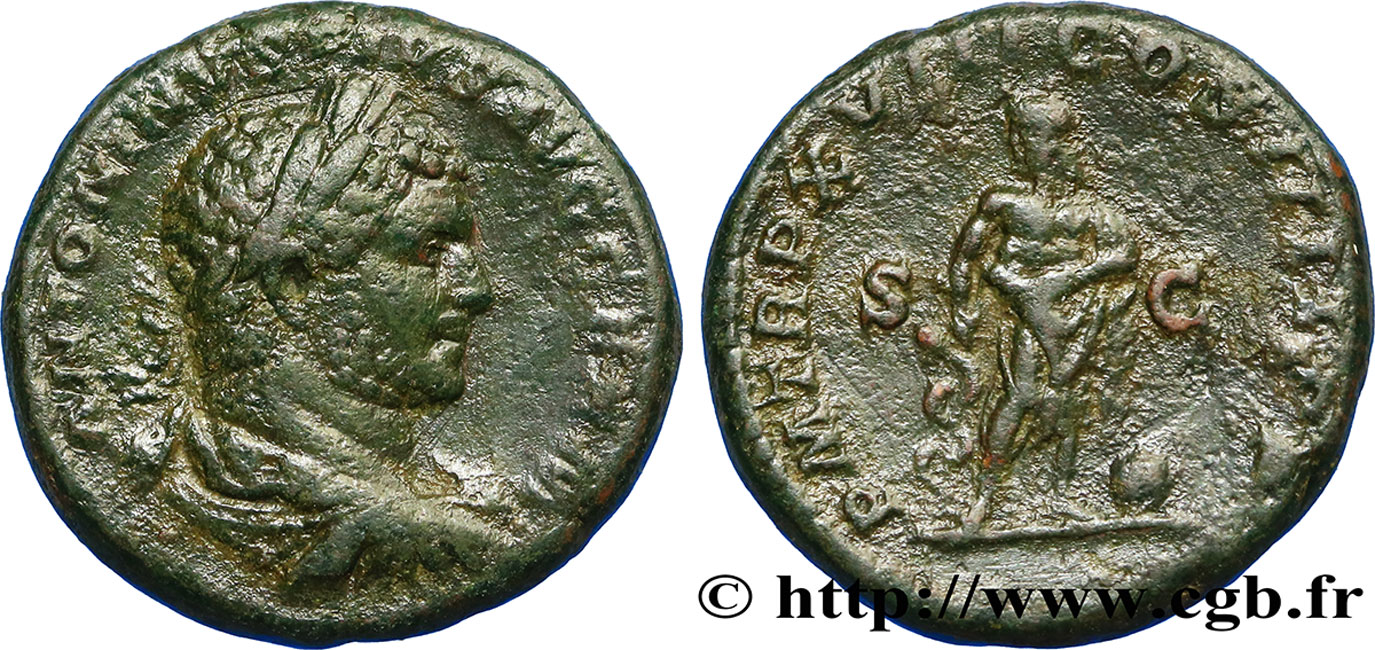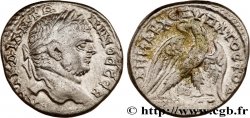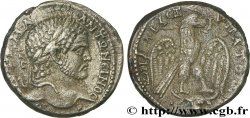E-auction 154-92333 - brm_303355 - CARACALLA As
You must signin and be an approved bidder to bid, LOGIN TO BID. Accounts are subject to approval and the approval process takes place within 48 hours. Do not wait until the day a sale closes to register. Clicking on « bid » constitutes acceptance of the terms of use of cgb.fr private e-auctions.
Bids must be placed in whole Euro amounts only. The sale will start closing at the time stated on the item description; any bids received at the site after the closing time will not be executed. Transmission times may vary and bids could be rejected if you wait until the last second. For further information ckeck the E-auctions F.A.Q.
NO BUYER'S FEE.
NO BUYER'S FEE.
| Estimate : | 150 € |
| Price : | 43 € |
| Maximum bid : | 76 € |
| End of the sale : | 28 March 2016 14:46:00 |
| bidders : | 9 bidders |
Type : As
Date: 215
Mint name / Town : Roma
Metal : copper
Diameter : 24,5 mm
Orientation dies : 6 h.
Weight : 10,82 g.
Rarity : R1
Coments on the condition:
Exemplaire bien centré sur un flan ovale à l’usure régulière. Beau portrait de Caracalla avec une faiblesse de frappe sur la légende. Joli revers. Patine vert foncé légèrement granuleuse
Catalogue references :
Predigree :
Cet exemplairre provient de ROME III, n° 63
Obverse
Obverse legend : ANTONINVS PIVS AVG GERM.
Obverse description : Buste lauré, drapé et cuirassé de Caracalla à droite, vu de trois quarts en arrière (A*2).
Obverse translation : “Antoninus Pius Augustus Germanicus”, (Antonin pieux auguste germanique).
Reverse
Reverse legend : P M TR P XVIII COS IIII P P/ S|C.
Reverse description : Esculape debout de face, regardant à gauche, tenant un bâton autour duquel est enroulé un serpent ; à gauche, Télesphore debout enveloppé dans son manteau ; à droite, un globe.
Reverse translation : “Pontifex Maximus Tribunicia Potestate duodevicesimum Consul quartum Pater Patriæ”, (Grand pontife revêtu de la dix-huitième puissance tribunitienne consul pour la quatrième fois père de la patrie).
Commentary
Rubans de type 3. Ptéryges fines sous le paludamentum. C’est le seul exemplaire que nous ayons présenté.








 Report a mistake
Report a mistake Print the page
Print the page Share my selection
Share my selection Ask a question
Ask a question Consign / sell
Consign / sell
 Full data
Full data








